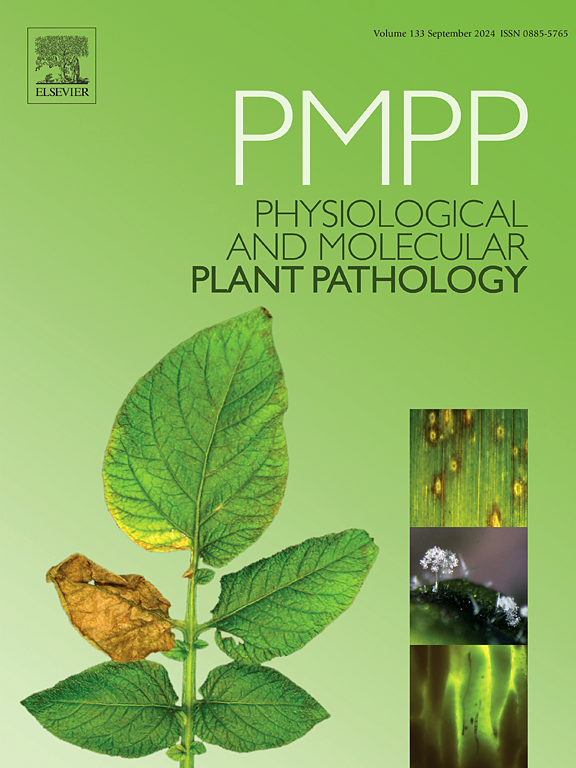Analysis of key differential metabolites in Astragalus membranaceus var. mongholicus against Fusarium oxysporum and assessment of sucrose as putative resistance-related metabolite
IF 2.8
3区 农林科学
Q2 PLANT SCIENCES
引用次数: 0
Abstract
Root rot of Astragalus membranaceus var. mongholicus (AMM) is a destructive disease that severely impacts both the production and clinical use of AMM. Cultivating resistant varieties can effectively manage root rot, but the resistance mechanisms and evaluation indicators for AMM against root rot fungi remain unclear. This study aims to investigate the resistance mechanisms of AMM against Fusarium oxysporum (FO), one of the primary pathogens responsible for root rot, using a 1H nuclear magnetic resonance (NMR)-based untargeted metabolomic approach, and to identify resistance-related (RR) metabolites for guiding future breeding efforts. The results showed that the metabolite profile of AMM was significantly altered by FO infection, with disturbances intensifying over time as the disease progressed. A total of 12 annotated metabolites were identified as differential metabolites (DMs) across three time points. These metabolites exhibited different patterns of abundance changes, with specific changes in sucrose levels suggesting insights into the resistance mechanism. Notably, the sucrose content in a resistant variety-Longqi No. 4 was significantly higher than in a susceptible variety-Longqi No. 1, both before and after inoculation, indicating that sucrose could be a constitutive RR metabolite in AMM. The results obtained from high performance liquid chromatography - quadrupole time-of-flight - mass spectrometry (HPLC-Q/TOF-MS)-based untargeted metabolomic analysis showed that exposure to 8.0 g/L sucrose significantly altered the metabolism of FO strains, and 141 of 177 identified DMs exhibited significantly upregulated abundance. Global natural product social molecular networking (GNPS) analysis suggested that FO strains might produce a wider variety of secondary metabolites under sucrose stress, with certain phospholipid compounds showing significantly higher abundance. These findings enhance our understanding of AMM's resistance mechanisms against FO infection and provide evidence for sucrose as a key RR metabolite in AMM resistance breeding.
求助全文
约1分钟内获得全文
求助全文
来源期刊
CiteScore
4.30
自引率
7.40%
发文量
130
审稿时长
38 days
期刊介绍:
Physiological and Molecular Plant Pathology provides an International forum for original research papers, reviews, and commentaries on all aspects of the molecular biology, biochemistry, physiology, histology and cytology, genetics and evolution of plant-microbe interactions.
Papers on all kinds of infective pathogen, including viruses, prokaryotes, fungi, and nematodes, as well as mutualistic organisms such as Rhizobium and mycorrhyzal fungi, are acceptable as long as they have a bearing on the interaction between pathogen and plant.

 求助内容:
求助内容: 应助结果提醒方式:
应助结果提醒方式:


